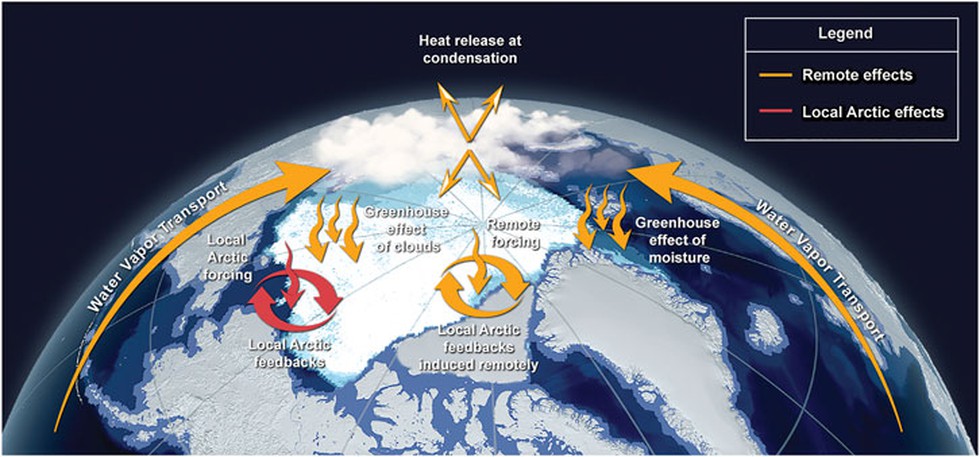
Arctic Amplification

24.04.2025
Arctic Amplification
|
For Prelims: What is Arctic Amplification?, Key Highlights from the 2024 European State of the Climate Report |
Why in the news?
According to the 2024 European State of the Climate Report, Europe has warmed nearly twice as much as the global average, with far-reaching climatic and ecological consequences.
What is Arctic Amplification?
- Arctic amplification is a phenomenon where temperature changes in the polar regions, especially the Arctic, are more intense than the global average temperature change.
- It is a form of polar amplification, which occurs when changes in Earth’s atmosphere lead to a greater rise in temperatures near the poles than in other parts of the world.
- This effect is measured against the average temperature rise of the planet and is particularly pronounced in the northern polar regions, hence the term Arctic amplification.
- The phenomenon is primarily driven by changes in the net radiation balance of the atmosphere, especially due to the increase in greenhouse gases like CO₂ and methane, which trap more heat in the Arctic region.
- The major contributing factors to Arctic amplification are: Ice-Albedo Feedback, Lapse Rate Feedback, Water Vapour Feedback & Ocean Heat Transport.
Key Highlights from the 2024 European State of the Climate Report:
Warming trends in Europe vs. Global Averages:
- The global average temperature has risen by approximately 3°C above pre-industrial levels (1850–1900 baseline).
- In 2024, the planet crossed the critical 5°C threshold for the first time ever.
- Europe’s average temperature has increased by about 4°C, making it one of the fastest-warming regions on Earth.
- This accelerated warming has led to extreme weather events, including intense heat waves, heavy rainfall, and flooding.
Regional climatic contrasts within Europe:
- The Eastern part of Europe experienced warmer and sunnier
- Western Europe witnessed cloudier and wetter
- Southeastern European countries (e.g., Bulgaria, Romania, Serbia, Croatia) saw their longest heatwave on record in 2024.
- The number of ‘cold stress days’ was the lowest ever, and below-freezing temperature days dropped significantly.
Source: Indian Express
Consider the following statements regarding to Arctic Amplification:
1. Arctic amplification is a phenomenon where temperature changes in the polar regions, especially the Arctic.
2.It is a form of polar amplification, which occurs when changes in Earth’s atmosphere lead to a greater rise in temperatures near the poles than in other parts of the world.
Which of the statements given above is/are correct?
A.1 only
B.2 only
C.Both 1 and 2
D.Neither 1 nor 2
Answer C